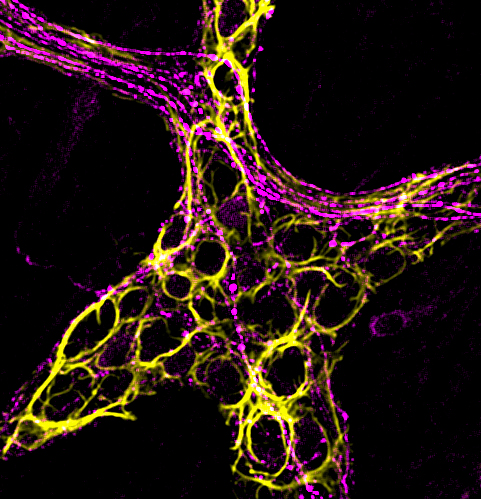New grant supports fight against gut pain
Article Highlights
- The National Institutes of Health have awarded a nearly $1.8 million grant to an MSU research team to continue delving into the cellular basis of visceral gut pain, the most common symptom of gastrointestinal problems.
- Led by Brian Gulbransen, the project holds promise for the development of novel therapeutics that could help alleviate gut pain, a condition currently lacking in effective treatments.
- Working with mouse models, Gulbransen’s team will further explore the contributions of cells known as glia to gut pain in the context of variables including sex, stress and previous experiences with inflammation in the gut.
Michigan State University researcher Brian Gulbransen has been awarded a nearly $1.8 million grant from the National Institutes of Health to tackle chronic gut pain. Visceral pain significantly impacts quality of life for millions of people and is the most common symptom of gastrointestinal, or GI, problems.
This four-year grant will fuel Gulbransen's team's exploration of how sex, stress and past experiences with inflammation influence a person's vulnerability to visceral pain. Their research holds promise for the development of novel therapeutic approaches to alleviate chronic gut pain.
Currently, there's a lack of effective treatments for chronic gut pain, Gulbransen said, because the complexities of gut-brain communication pose a challenge for therapeutic development.
Getting to the source of visceral gut pain
Nearly 40% of all humans are affected by a group of disorders involving gut-brain interaction, which includes afflictions like irritable bowel syndrome, reflux hypersensitivity and functional dyspepsia.

“It’s a big problem,” said Gulbransen, an MSU Research Foundation Professor in the Department of Physiology. “Receiving this grant from NIH opens up opportunities to understand what might be causing all this pain and ultimately changing the process to eliminate or alleviate it.”
Gulbransen's lab isn't new to investigating gut pain and why certain people are more susceptible to it than others.
They’ve been delving into inflammation, and how previous experience with inflammation conditions make individuals more prone to future gut pain.
Now, Gulbransen and his team are broadening their scope to encompass the cellular basis of why and how factors like sex and stress levels play such a crucial role in visceral gut pain. Specifically, they’re focusing on nervous system cells known as glia.
Although glia don't send pain signals, they sensitize the neurons that do, making the neurons more likely to fire off.
"We're ideally looking to figure out the key differences between glia and how they exert control over neurons differently,” Gulbransen said. “We think they could be the key to understanding the root cause of pain felt from GI disorders.”
The research is unpacking pain at a fundamental biological level, looking at how cells interact with one another in the gut. To investigate these interactions, the team will make use of mouse models that serve as proxies for a number of variables in human gut health, including sex differences, early-life stress and previous inflammation of the gut.

“Other researchers are looking into the nervous system specifically and how pain is being perceived throughout the body. We’re focusing on the fundamental mechanisms underlying gut pain sensitization, specifically the glia in the gut,” Gulbransen said.
Collaboration and advanced techniques
A faculty member at MSU for the past 12 years, Gulbransen has found immense value in the gut, or enteric, neuroscience research community at MSU.
“It’s one of the only enteric focused neuroscience groups in the world,” Gulbransen said. “And having that unique community with colleagues like Geoffroy Laumet, a pain mechanisms expert within the department, is a huge advantage for us to do research no one else is doing.”
Access to a new confocal microscope has also given the researchers a surge.
"The support we've received from the College of Natural Science has been instrumental," Gulbransen said. "Their recent contribution of the confocal microscope will significantly enhance our ability to image the tiny nerve fibers in the gut, allowing for faster and more precise data collection."
Gulbransen's long-standing interest in the enteric nervous system and past experience studying pain mechanisms makes him uniquely positioned to address this problem of visceral gut pain.
"This national funding of our work opens doors to new avenues for understanding why people develop chronic pain and lead to development of targeted therapies that could impact millions.”